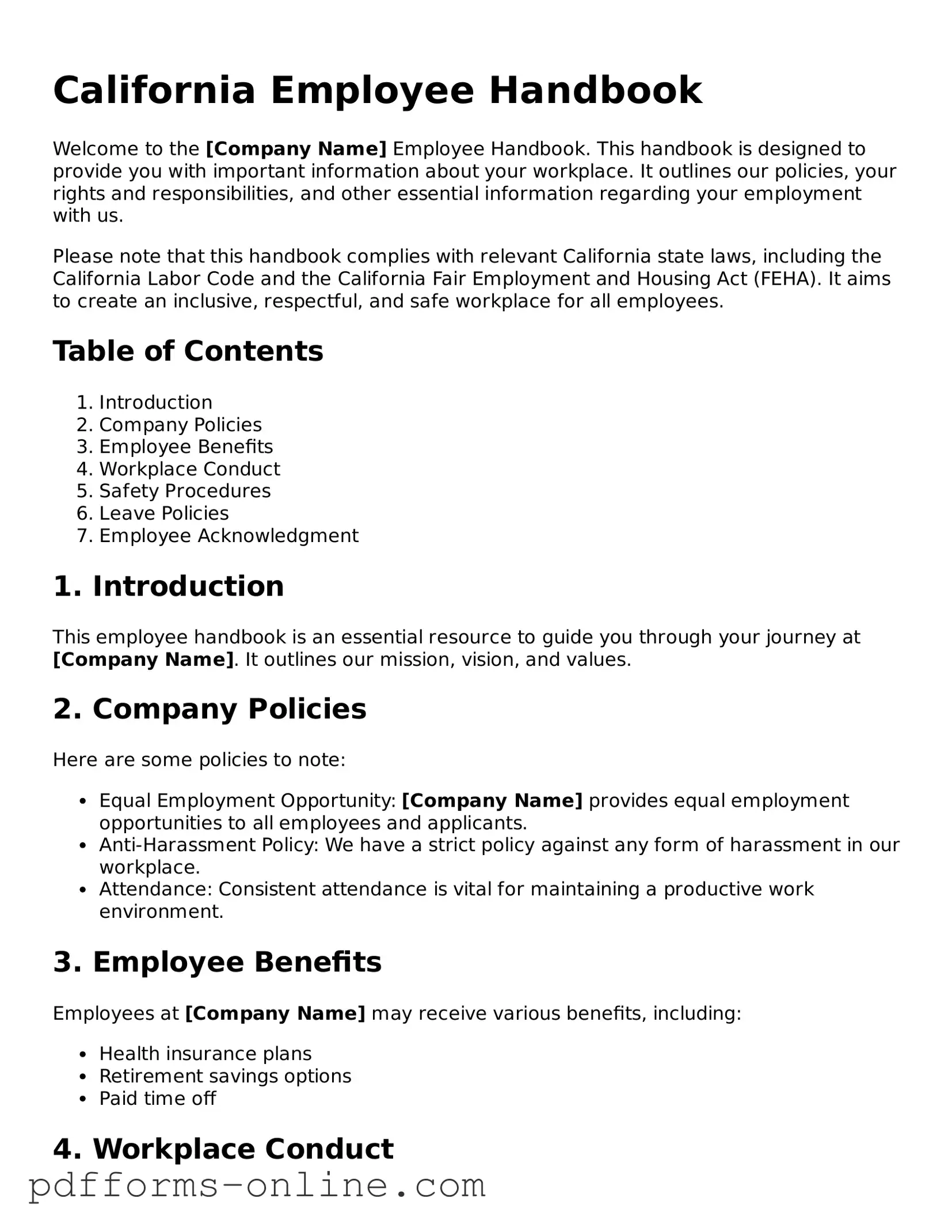California Employee Handbook
Welcome to the [Company Name] Employee Handbook. This handbook is designed to provide you with important information about your workplace. It outlines our policies, your rights and responsibilities, and other essential information regarding your employment with us.
Please note that this handbook complies with relevant California state laws, including the California Labor Code and the California Fair Employment and Housing Act (FEHA). It aims to create an inclusive, respectful, and safe workplace for all employees.
Table of Contents
- Introduction
- Company Policies
- Employee Benefits
- Workplace Conduct
- Safety Procedures
- Leave Policies
- Employee Acknowledgment
1. Introduction
This employee handbook is an essential resource to guide you through your journey at [Company Name]. It outlines our mission, vision, and values.
2. Company Policies
Here are some policies to note:
- Equal Employment Opportunity: [Company Name] provides equal employment opportunities to all employees and applicants.
- Anti-Harassment Policy: We have a strict policy against any form of harassment in our workplace.
- Attendance: Consistent attendance is vital for maintaining a productive work environment.
3. Employee Benefits
Employees at [Company Name] may receive various benefits, including:
- Health insurance plans
- Retirement savings options
- Paid time off
4. Workplace Conduct
Respectful and professional behavior is expected at all times. All employees should:
- Communicate respectfully with colleagues and supervisors.
- Adhere to the dress code policy.
- Maintain confidentiality of sensitive information.
5. Safety Procedures
Your safety is a top priority at [Company Name]. Please be familiar with our safety procedures, which include:
- Emergency exit routes
- Reporting hazards and unsafe conditions
- First aid procedures and contacts
6. Leave Policies
Employees are entitled to various types of leave. These may include:
- Family and Medical Leave Act (FMLA)
- State Disability Insurance (SDI)
- Paid Family Leave (PFL)
7. Employee Acknowledgment
Please sign and date below to acknowledge that you have received and read this employee handbook:
Employee Name: ________________________
Date: ________________________
